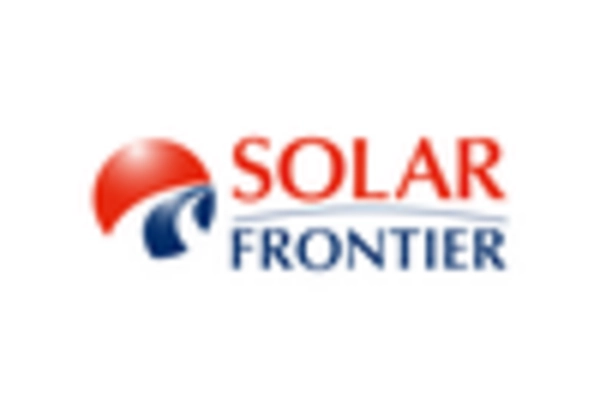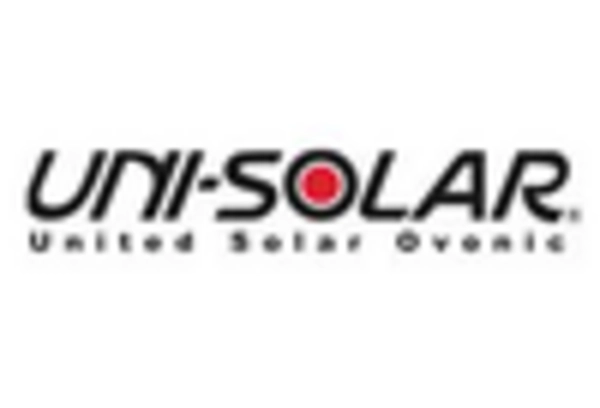Technological Innovations
Technological innovations are reshaping the Amorphous Silicon Thin Film Solar Cell Market. Advances in manufacturing techniques and materials science are enhancing the efficiency and performance of these solar cells. Recent developments have led to improved light absorption and energy conversion rates, making amorphous silicon cells more competitive with traditional solar technologies. The introduction of tandem solar cells, which combine amorphous silicon with other materials, is also gaining traction. These innovations not only improve efficiency but also expand the potential applications of amorphous silicon thin film solar cells. As research and development continue to progress, the market is likely to witness a surge in new products and solutions.
Versatility in Applications
The versatility of amorphous silicon thin film solar cells is a driving force in the Amorphous Silicon Thin Film Solar Cell Market. These cells can be integrated into a variety of surfaces, including flexible substrates, which allows for innovative applications in building-integrated photovoltaics and portable electronics. This adaptability is particularly appealing in urban environments where space is limited. Furthermore, the lightweight nature of these cells enables their use in unconventional settings, such as on vehicles or in wearable technology. As industries seek to incorporate renewable energy solutions into diverse applications, the demand for amorphous silicon thin film solar cells is expected to rise, potentially leading to a broader market presence.
Supportive Policy Frameworks
Supportive policy frameworks are crucial for the growth of the Amorphous Silicon Thin Film Solar Cell Market. Governments worldwide are implementing policies that promote renewable energy adoption, including incentives for solar energy installations. These policies often include tax credits, grants, and feed-in tariffs that encourage both consumers and businesses to invest in solar technology. In 2025, it is expected that more countries will adopt favorable regulations that facilitate the deployment of amorphous silicon thin film solar cells. This regulatory support not only enhances market confidence but also stimulates investment in research and development, further driving innovation and market expansion.
Growing Demand for Renewable Energy
The increasing The Amorphous Silicon Thin Film Solar Cell Industry. As nations strive to meet ambitious climate goals, the transition from fossil fuels to renewable energy is accelerating. Amorphous silicon thin film solar cells, with their lower production costs and ease of integration, are well-positioned to capture a share of this expanding market. In 2025, the renewable energy sector is anticipated to grow at a compound annual growth rate (CAGR) of over 10%, with solar energy playing a pivotal role. This trend suggests that amorphous silicon thin film solar cells could become a preferred choice for energy generation in various sectors.
Cost-Effectiveness of Amorphous Silicon Thin Film Solar Cells
The Amorphous Silicon Thin Film Solar Cell Market is experiencing a notable shift towards cost-effectiveness. These solar cells are generally less expensive to produce compared to traditional crystalline silicon cells, which can lead to lower installation costs. The production process for amorphous silicon is less energy-intensive, potentially resulting in a lower overall carbon footprint. As the demand for affordable renewable energy solutions increases, the market for amorphous silicon thin film solar cells is likely to expand. In 2025, the average cost of solar energy generation from these cells is projected to be significantly lower than that of conventional technologies, making them an attractive option for both residential and commercial applications.
















Leave a Comment